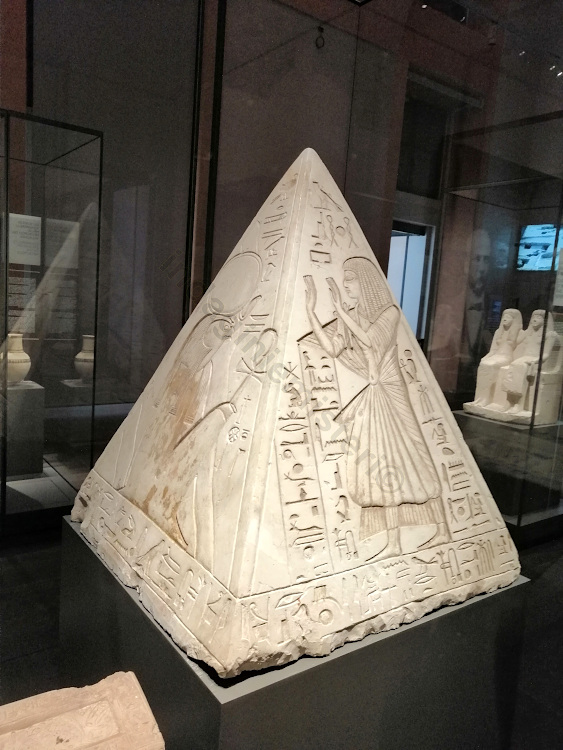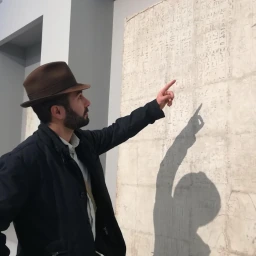The figure of the Sacred Center is as old as human beings. Since the earliest forms of symbolic knowledge, it has expressed the place of divine encounter, the space where the transcendent manifests itself. It has a centre because it represents the principle from which all things were generated. Furthermore, it is sacred as a reflection of the supreme being, the otherworldly deity. Every civilisation since the origins of humanity, has had its own conception of sacer. It is a Latin term expressing ‘that which belongs to something else’, which thus pertains to a supersensible, numinous order.

The Sacred Center in human history
The famous historian of religions Mircea Eliade traced the symbolism of the Sacred Center into three distinct complexes of meaning1.
Mountain as a Sacred Center
Firstly, it is at the sacred mountain, according to Eliade, that man has a place of encounter with the supernatural. On the mountain, in fact, heaven and earth ideally meet, the dimension of matter merges with the metaphysical one. A characteristic example is the sacred value of the mountains for Jews: on Sinai, Moses received the Tablets of the Law from Yahweh, so “Tabor and Hermon rejoice in your name”2.
The symbolic and religious significance of mountains is endless. Mountains are often looked on as the place where sky and earth meet, a “central point” therefore, the point through which the Axis Mundi goes, a region impregnated with the sacred, a spot where one can pass from one cosmic zone to another.
The mountain, the temple, the city, and so on are consecrate because they are given the attributes of the “centre”; originally, that is, they were assimilated into the highest point of the universe, and the point were heaven and earth meet.
Mircea Eliade, Patterns in Comparative Religion, Translated by Rosemary Sheed, University of Nebraska Press, 1996
Temples and cultic buildings
Eliade recognises in the construction of temples and palaces of ancient civilisations a need to reach divinity in an easier way. To this extent, they mimicked the sacred function of the mountain and, in many cases, tended to take its form. For the Jews the Sacred Center became the Temple of Solomon in Jerusalem, when they solemnly placed the Ark of the Covenant, with the Tablets of the Law, inside the Sancta Sanctorum3.
The ancient Babylonians placed on the top of the ziqqurats a temple of encounter with the divine. Such ‘zaqaru’, high places, allowed special rites to be performed in which the cosmic union between man and heaven was renovated.
This same symbolism of the center explains other series of cosmological images and religious beliefs. […] temples are replicas of the cosmic mountain and hence constitute the pre-eminent “link” between earth and heaven […].
The ziggurat was literally a cosmic mountain; the seven stories represented the seven planetary heavens; by ascending them, the priest reached the summit of the universe. An entire country (e.g., Palestine), a city (Jerusalem), a sanctuary (the Temple in Jerusalem), all equally well present an imago mundi […]
It is clear, then, that both the imago mundi and the Center are repeated in the inhabited world. Since the sacred mountain is an axis mundi connecting earth with heaven, […] it is symbolically situated at the Center of the World. The multiplicity, or even the infinity, of centers of the world raises no difficulty for religious thought.
Mircea Eliade, The Sacred and the Profane, Translated from the French by Willard R. Trask, Harcourt, Brace and Company, 1959

The Axis of the World concept
Also crucial is the significance of the Axis of the World. It is the sacred place par excellence, where the ascension between earth and heaven takes place. For instance, such is the cosmogonic conception of benben for the Ancient Egyptians at Heliopolis, the primordial mound from which Nun originated and from which everything began. In the solar temple of Heliopolis, there was a stone called benben that embodied the essence of the divine. The symbols of the obelisk and pyramidion derived from it. Analogous could be the symbolism of the Djed, a sacred hieroglyphic. It ideally depicted the backbone of Osiris and thus became the axis and pillar of the Universe itself.

The Omphalos and the Sacred Center for the Greeks
Even the ancient Greeks expressed the concept of the Sacred Center through a cultic stone called the Omphalos and connected to the concept of the Axis of the World. The Omphalos, which literally means ‘navel’, was placed in the Temple of Apollo at Delphi, as it was believed that the centre of the Universe was located there4. The rock was finely carved and covered with net-like bands, signifying all creation that originated from the divine. At the Omphalos the Oracle of Delphi revealed her prophecies, and therefore it represented the privileged encounter point with divinity. For this reason, the term has by extension become synonymous with the Sacred Center.

The Cross and Christianity
With the advent of Christianity, the place of encounter between man and the divine is Christ, and thus the Cross. It stands on a sacred mountain, Calvary, and represents an ideal axis. As the horizontal arm of the Cross symbolises the earthly dimension of creation, the vertical arm is synonymous with ascension towards God. Hence, Christ is the true Axis of the World; sacred mountain; and finally Temple (“Destroy this temple and in three days I will raise it up”5).
From this connection of meaning derives the symbol of the Sacred Center most commonly used in Christian history. The figure shows eight rays emanating from a centre. It derives from the intersection of the Cross and the Chi Rho. Since this Monogram is an abbreviation of the name Khristòs, the Sacred Center refers to the figure of the Messiah on the Cross, where the encounter between human and divine nature is fully accomplished.

The Sacred Center in the Middle Ages
During the Middle Ages, the symbol of the Sacred Center spread widely throughout Europe by graffiti, engravings, wall paintings, even in more elaborate forms.

Some of these depictions, such as at Chinon, are found in places the Knights Templar frequented. For this reason, it is assumed that this hierosolimitic order widely spread the symbolism. Indeed, the Templars were the ideal heirs of the Sacred Center, given their involvement in Jerusalem during the Crusades in preserving the area of the ancient Solomon’s Temple.

The symbol of the Sacred Center acquires the same attributes as God. It depicts the Absolute, the generating and ordering principle of all things that, otherwise, would tend towards chaos. As the centre, it is the singularity from which the matter was generated and to which everything has to return.
Samuele Corrente Naso


